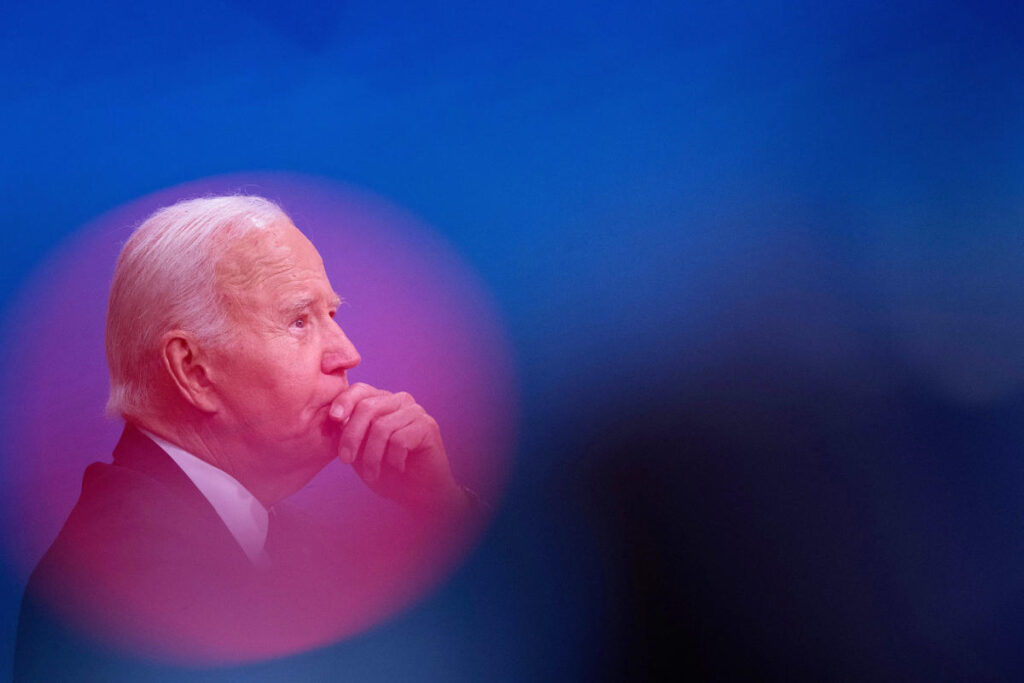As the current political landscape unfolds, a consensus appears to emerge among voters regardless of their partisan affiliations: discontent with President Joe Biden’s leadership. Despite his absence from the ballot this election cycle, Biden’s presidency casts a long shadow, affecting the viability of candidates vying for office. Key issues such as immigration, economic performance, and international complexities contribute to his unpopularity. This sentiment creates a notable opportunity for former President Donald Trump, who finds himself with a near-equal chance of reclaiming the White House just four years after being voted out. The Democrats’ response to this discontent involved a strategic pivot from Biden to Vice President Kamala Harris, acknowledging the need to reestablish a winning narrative. However, Biden’s legacy, tied to critical and contentious issues, remains a challenge for Harris as she contends to distance herself from the administration while upholding its policies.
Recent polling statistics reveal a stark picture of Biden’s approval ratings, with only 54% of voters expressing disapproval and a notable 60% discontent earlier in the year. This discontent has seemingly intensified in correlation with economic strains, particularly as inflation surged. When delving into specific phrases like “Bidenomics,” the sentiment appears to worsen, with voters viewing the term negatively by a 2-to-1 ratio. Even among swing voters—those who have historically fluctuated between parties—the repercussions of Biden’s policies are glaring. The discontent among these independent voters reveals a significant challenge for Harris, who needs these voters to gain traction in the election. Strikingly, within her own party, support for “Bidenomics” is tepid at best, casting further doubt on the coherence of her campaign messaging.
Harris’ recent remarks on “The View,” where she struggled to identify a decision by Biden that she would have altered, serve as a potentially damaging gaffe in her campaign. The perception of indecisiveness can echo unfavorable sentiments cultivated by previous elections, reminiscent of John Kerry’s missteps in 2004. This misstep underscores the critical time constraint Harris faces as she endeavors to define her own political identity separate from Biden’s. As discontent swells against the incumbent president, her challenge centers not just around policy but around establishing credibility and leadership unique from the Biden administration, which voters have already begun to associate with insufficient performance.
Notably, a historical context positions Kamala Harris in a precarious situation; modern vice presidents have had minimal success in succeeding their sitting presidents. Only George H.W. Bush achieved victory post-vice presidency, while figures like Al Gore, Hubert Humphrey, and Richard Nixon faced narrowly contested losses, emphasizing the inherent challenges of her position. The dynamics between incumbency and incumbents’ popularity weight heavily on how Harris navigates the remaining weeks until Election Day. Without some form of a clear departure from Biden or persuasive policy innovations, her pathway to victory may become increasingly tenuous.
The issue of age also permeates discussions about presidential contenders, particularly as Biden holds the title of the oldest candidate in the running. Scepticism about his vitality could unintentionally backfire on Trump, present challenges for his own campaign, and reshape perceptions among the voter base. If the age factor escalates as a talking point, it could have unintended consequences for Trump, potentially rugged outside perceptions under scrutiny. Such a backdrop further complicates the race, creating an atmosphere where age could both harm and benefit respective candidates.
As the election approaches, analysis reflects a narrowing of the popular vote versus the Electoral College narrative that marked previous cycles. In core Democratic states, Trump’s lagging support has shown signs of diminishing, hinting at a possible realignment in voter sentiment as he closes the gap against his opposition. While still far from winning these states outright, improvements indicate a potential shift in dynamics, suggesting that the upcoming election may culminate in a congressionally significant outcome regardless of the challenges both candidates face. If Trump were to reclaim the presidency while simultaneously winning the popular vote, it would represent a pivotal change in the perception of public endorsement, differing from the mandates he claimed after the 2016 election. The implications of this election cycle manifest not only in political strategy but in the broader narrative of voter engagement and representation moving forward.

